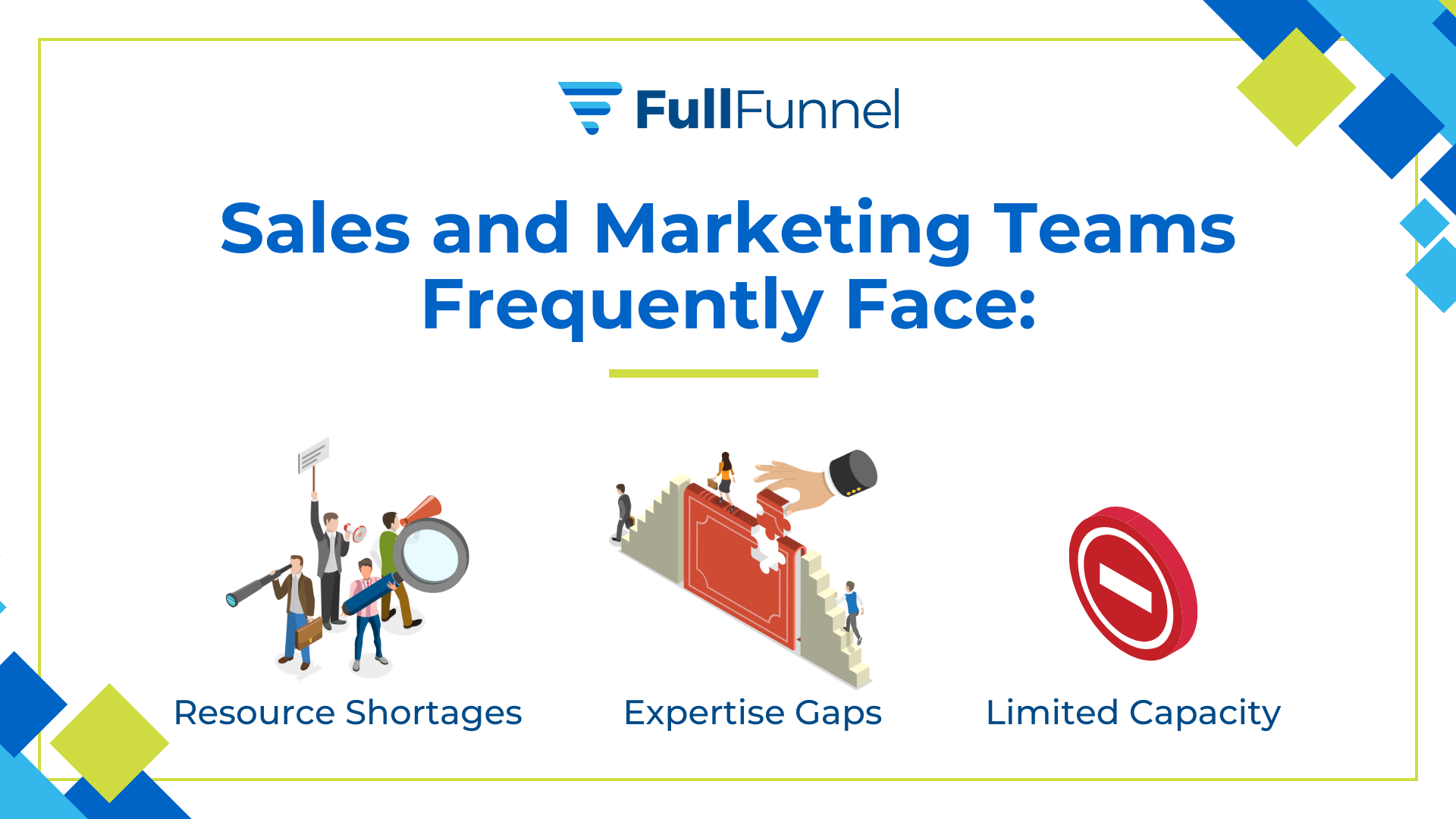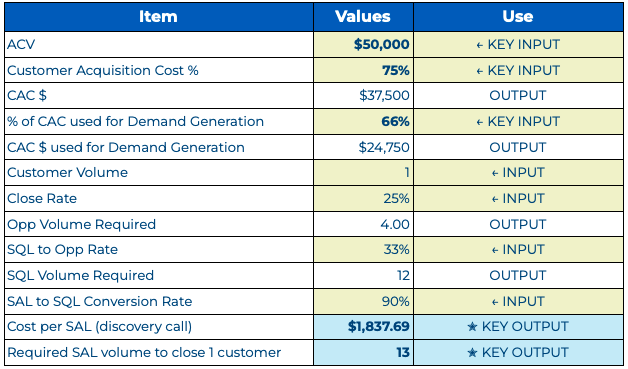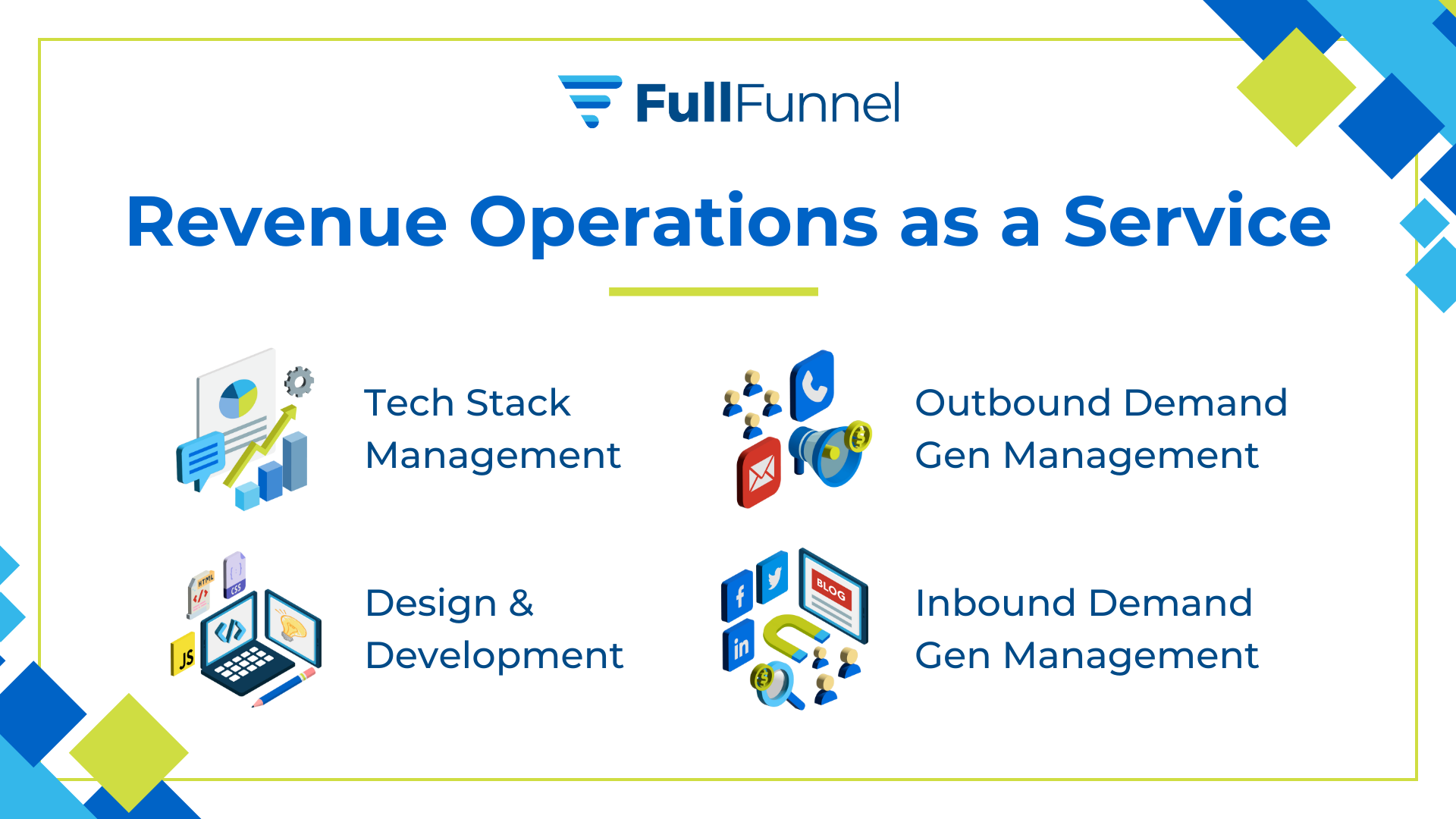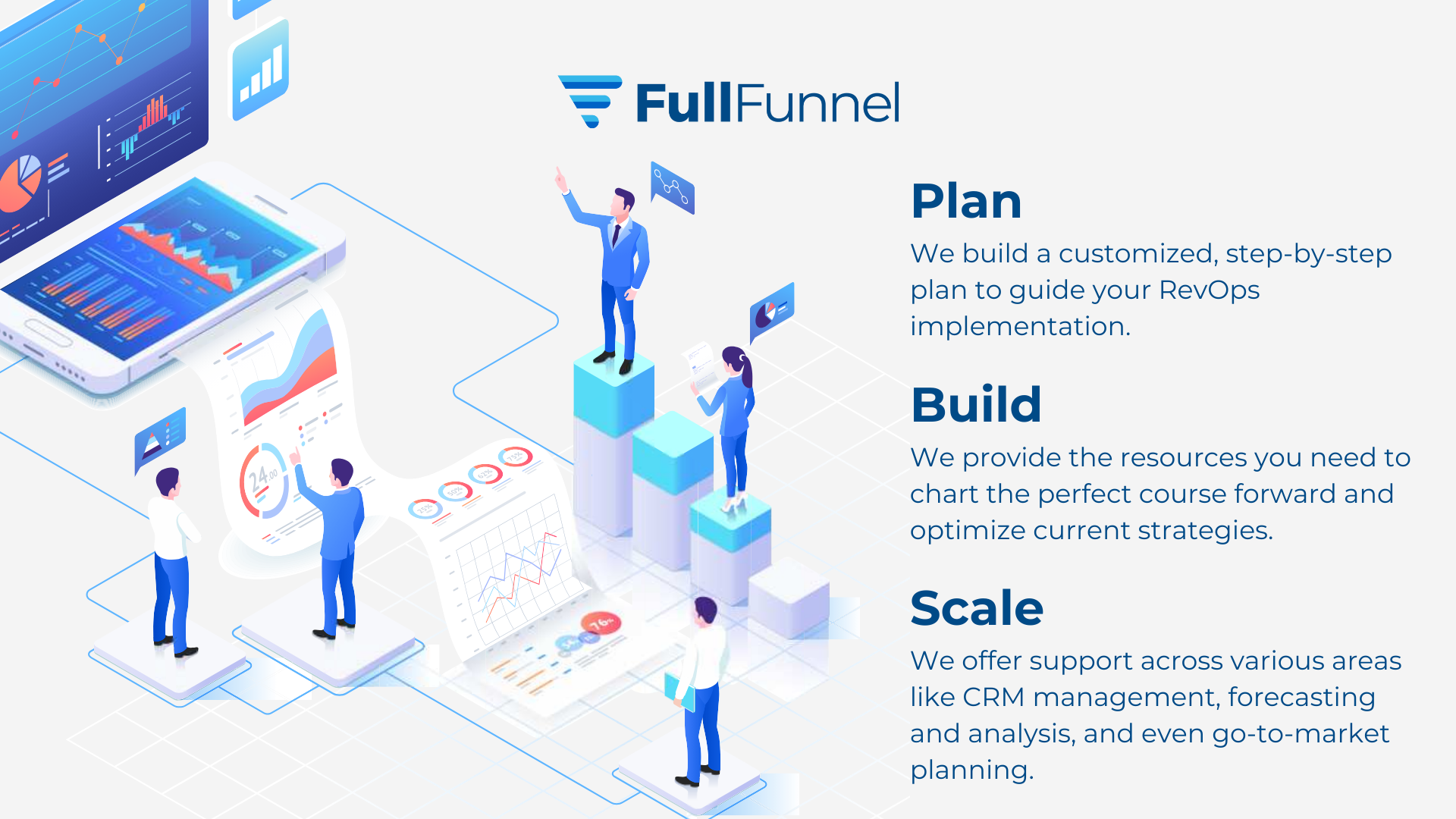
RevOps is no longer just a buzzword—it’s a mission-critical function for B2B organizations looking to scale efficiently. In 2025, RevOps is undergoing a major transformation, driven by advancements in AI, the increasing complexity of B2B sales cycles, and heightened expectations for data-driven decision-making. Companies are no longer treating RevOps as a back-office function; instead, it's becoming a central driver of predictable revenue growth, unifying sales, marketing, and customer success under a single strategy.
With economic uncertainty and shifting buyer behaviors, businesses are prioritizing operational efficiency more than ever, focusing on automating manual workflows, refining attribution models, and leveraging predictive analytics to optimize pipeline management. As organizations adopt more sophisticated tech stacks, business leaders are expected to act as architects—aligning systems, processes, and insights to reduce friction and accelerate deal velocity. In this guide, we’ll explore how revenue operations can help organizations achieve scalable, data-driven growth in 2025 and beyond.
Defining Revenue Operations accurately in today's market is a challenge, primarily because of widespread misconceptions about what it truly entails. Some view RevOps as merely a department or function that supports sales and marketing, which is a fundamental misunderstanding. By definition, revenue refers to the income generated by an organization, and operations denotes an active process. Therefore, Revenue Operations is the active process of generating and managing an organization’s income.
Within this framework, this model is not just a support department for sales and marketing but rather a comprehensive system through which all revenue flows. It's about creating a cohesive system where all departments contributing to revenue growth work in harmony. By providing a unified source of operational processes, RevOps improves collaboration across new departments and leverages data-driven insights for informed decision-making.
There are three critical segments within revenue operations services: demand generation, pipeline management, and customer success. Each plays a pivotal role in ensuring the smooth transition of prospects through the sales funnel, from initial contact to loyal customers.
Demand generation is all about attracting your ideal client profile (ICP) and initiating a conversation. It’s “getting the horse to water” - the process of making potential clients aware of your offerings and persuading them to engage. There are four essential pillars of demand generation:
The effectiveness of demand generation, in a B2B context, is measured by the cost per discovery call (booked and held) with your ideal client profile (ICP), aiming for a financially scalable customer acquisition cost (CAC) at the end of the funnel.
Once a discovery call is scheduled, pipeline management takes over to "get the horse to drink." This phase focuses on converting those initial conversations into revenue by navigating the sales process, from conducting discovery calls and submitting proposals to closing deals. The goal is to achieve a consistent and scalable target acquisition cost, ensuring the efficient conversion of prospects into profitable customers.
The final phase is customer success, where the focus shifts to maintaining and expanding the relationship post-sale. Customer success ensures a smooth onboarding experience, provides ongoing support, and creates opportunities for upselling and cross-selling, or “getting the horse to keep drinking vigorously”. Customer success is crucial for fostering loyalty, encouraging repeat business, and potentially turning customers into advocates for your brand.
Over the last decade, FullFunnel has collaborated with diverse clients, from publicly traded corporations to nascent startups. Most sales and marketing leaders have clear strategic visions, but their teams lack the skills or resources to execute them efficiently.

This gap can manifest in tasks as minor as tweaking a landing page or website, or as significant as rolling out a new training initiative to tackle specific challenges in pipeline management. The stark reality for most sales and marketing departments is the necessity to work within the bounds of available resources, often limited by recruitment processes, internal technical know-how, and a narrow focus stemming from a lack of broader perspective or skill sets. This confines organizations to a cycle of operational stagnation, hindering opportunities to innovate and excel.
Revenue Operations overcomes these challenges by aligning sales and marketing teams to maximize resources, skills, and output for revenue growth. So what does effective RevOps look like, and where should you begin?
To optimize sales, marketing, and customer success, start with a comprehensive review. Map daily activities, team structure, goals, and performance metrics. This clear picture will reveal areas for improvement, paving the way for a successful transformation.
Start by establishing the CpSAL the organization can bear financially then work on meeting or beating it. That target is variable depending on the type of company, industry, and financial backing. Once you know that, you can set goals for sales and customer success, including Target Cost Per Opportunity and ultimately Target Cost per Acquisition.
Let’s review an example calculator that highlights how CAC and contract value inputs help organizations identify financial inefficiencies throughout the pipeline.

This calculator acts as a demand generation guidepost for financial productivity by identifying target cost per SAL and volume goals. Demand generation needs to generate demand at a cost-effective rate. Pipeline management needs to convert leads efficiently while keeping acquisition costs low. Customer success then takes over to ensure long-term customer satisfaction and value.
Achieving a successful revenue operations framework relies heavily on seamlessly blending financial and operational data. This integration is essential to precisely tracking financial and operational efficiency.
Investing in the right tech stack for your business is a critical step. If navigating this area feels overwhelming, consider seeking help from a revenue operations company.
An aligned strategy requires a cultural shift. Teams must unite under a common vision and develop new skills to bridge departmental gaps. Training and open communication are key to fostering collaboration and innovation.
Shifting from separate sales and marketing functions to a combined RevOps model can be challenging at first. To ease the transition, open communication is key. Regularly share updates and actively seek feedback from your team. This not only helps identify and fix problems quickly, but also fosters a collaborative spirit, which is vital for RevOps success.
Like Sales and Marketing, measure RevOps success using key performance indicators.
Demand Generation
Pipeline Management
Customer Success
This approach breaks down the traditional sales and marketing silos, creating a revenue-generating machine, which streamlines the entire sales process, fosters accountability and transparency across teams, and optimizes every step for growth. RevOps not only boosts revenue but also reduces costs, positively impacting your bottom line. By following the above steps, you can empower a strategic shift that unlocks new levels of efficiency and profitability for your business.
FullFunnel's mission is to help organizations address the capacity and capability challenges present in their sales and marketing programs. Our unique services enable organizations to respond more rapidly, minimize wasted time, and achieve the results they desire within a shorter timeframe.
FullFunnel’s Revenue Operations Services fall into four categories:

FullFunnel takes a unique approach to delivering services. Firstly, we assign a Managing Director, akin to a Chief Revenue Officer, who has both technocratic and strategic capabilities. This director works closely with our client partners to ensure that all programs, whether focused on demand generation, pipeline management, or customer success, are executed with the right mix of operational diligence and strategic insight. Our managing directors collaborate directly with our clients to achieve the desired outcomes.
FullFunnel operations are driven by sprint-based workflows, similar to those used by engineering teams. This methodology ensures high levels of accountability, transparency, and communication, setting the standard for our operational processes.
Partnering with FullFunnel gives you unrestricted access to a broad range of subject matter experts across the entire spectrum of sales and marketing. This allows you to transcend the limited skill sets of your internal team and avoid the complexities of managing external vendors who might only offer a narrow range of services.
FullFunnel caters to businesses at all stages. Whether you're just starting your RevOps journey or an established company needing to combat resource and skill gaps, FullFunnel has a tailored solution.

For companies just starting out, FullFunnel takes time to understand your business in detail. As your strategic partner, we build a customized, step-by-step plan to guide your RevOps implementation.
For companies already on their journey, but unsure on next steps; FullFunnel's RevOps as a Service steps in. We provide the resources you need to chart the perfect course forward. Plus, we'll help you optimize to get the most out of what you've already built.
RevOps running smoothly, but your team stretched thin? FullFunnel's got your back. We offer support across various areas like CRM management, forecasting and analysis, and even go-to-market planning. Let us handle the heavy lifting so your team can focus on strategic initiatives.
FullFunnel’s engagements are always offered in a rolling 60-day contract term to give our clients the maximum flexibility needed for their ever-changing and dynamic needs.
Interested in partnering with FullFunnel to catalyze your business success?
At FullFunnel, we are highly confident in our ability to offer a superior quality of service. FullFunnel provides a unique opportunity for a one-time, risk-free test drive of our services. This allows prospective clients to experience the FullFunnel difference firsthand before committing to ongoing engagements. FullFunnel Test Drive aims to address your most critical priorities through 20 to 30 hours of dedicated service that lays the foundation for long-term success.
Schedule a free consultation to discuss how FullFunnel can help you achieve growth, scale, and financial productivity.
Ready to get started solving your GTM and RevOps challenges?
Complete the form to request a free consultation and discover how FullFunnel can help solve even your toughest revenue related problems.